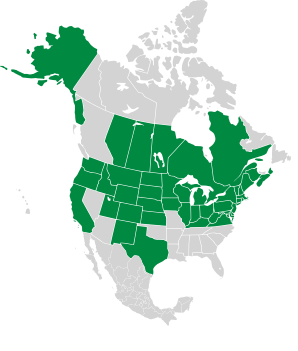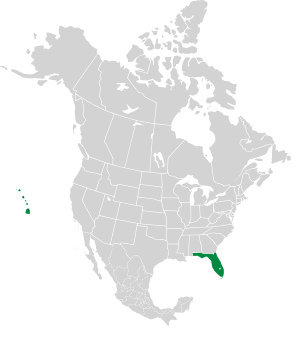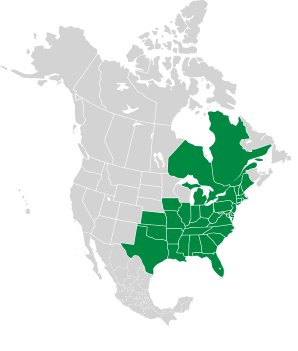Lonicera sempervirens L. var. hirsutula Rehder
Lonicera sempervirens L. var. minor Aiton
Lonicera sempervirens L. var. sempervirens
Phenianthus sempervirens (L.) Raf.

|
Lonicera sempervirens L. Trumpet honeysuckle, coral honeysuckle, woodbine,
Trumpet honeysuckle is native to North America. It is popular with landscapers, and many cultivated varieties are available. |
5/25/2009 · Boyce Thompson Arboretum, Superior, Arizona · ≈ 4½ × 3″ (11 × 7.9 cm) |
||||||||||||||||||||||||||||
|
| |||||||||||||||||||||||||||||
Lonicera fragrantissima |
Lonicera japonica |
You are here Lonicera sempervirens |
|||||||||||||||||||||||||||
|---|---|---|---|---|---|---|---|---|---|---|---|---|---|---|---|---|---|---|---|---|---|---|---|---|---|---|---|---|---|
| Common Name |  |
 |
 |
||||||||||||||||||||||||||
| Plant | Shrubs are 3-9½′ (1-3 m) around | A vine up to 16′ (5 m) in size. Young stems are reddish- or light-brown, while older stems are hollow, with peeling bark | Trumpet honeysuckle is a twining vine 3-20′ (91-609 cm) long, depending upon what it has to climb over. Bark is orange-brown, and peeling. | ||||||||||||||||||||||||||
| Flowers | Blooms are a creamy white color, in pairs, appearing in March-April, and very fragrant, with a lemony smell | Flowers are white, showy, fragrant, about 1″ (2.5 cm) in size. They fade to a yellow color, so the vine appears to have white and yellow flowers | In clusters of 2-4, each red or orange with yellow interiors, 1-2″ (2.5-5 cm) long, trumpet-shaped. They appear from April to July. | ||||||||||||||||||||||||||
| Leaves | Leaves are opposite, roughly oval, with smooth edges | Leaves are opposite, roughly oval-shaped, with smooth edges. Younger leaves may have lobes | Roughly oval in shape, opposite, bluish green, and 1-3″ (2.5-7.6 cm) long. Leaves at the base of flowers are fused at the base. | ||||||||||||||||||||||||||
| Fruit | Orange to red berries up to ⅜″ (1 cm) across | Black, about ⅛″ (3.2 mm) around | Berries are orange-red to deep red in color | ||||||||||||||||||||||||||
| Range/ Zones |
|
|
|
||||||||||||||||||||||||||
| Type | Wild | Wild | Wild | ||||||||||||||||||||||||||
| Occurrence | |||||||||||||||||||||||||||||




Identification: Trumpet honeysuckle is a twining vine 3-20′ (91-609 cm) long, depending upon what it has to climb over. Bark is orange-brown, and peeling. Leaves are roughly oval in shape, opposite, bluish green, and 1-3″ (2.5-7.6 cm) long. Leaves at the base of flowers are fused at the base. Flowers are in clusters of 2-4, each red or orange with yellow interiors, 1-2″ (2.5-5 cm) long, trumpet-shaped. The clusters are very showy, and popular with hummingbirds. They appear from April to July. Fruits are also attractive berries that are orange-red to deep red in color.
Online References:
The Lady Bird Johnson Wildflower Center
The University of Florida Institute of Food and Agricultural Sciences
The Connecticut Botanical Society's Connecticut wildflowers site
Wildflowers of the United States
Lonicera sempervirens L. var. hirsutula Rehder
Lonicera sempervirens L. var. minor Aiton
Lonicera sempervirens L. var. sempervirens
Phenianthus sempervirens (L.) Raf.
Lonicera sempervirens description by Thomas H. Kent, last updated 10 Sep 2023.
© FloraFinder.org. All rights reserved.
5/15/1979 · Virginia · By Tim Chandler 
5/25/2009 · Boyce Thompson Arboretum, Superior, Arizona · ≈ 4½ × 3″ (11 × 7.9 cm) 
Range: Zones 4-9:
